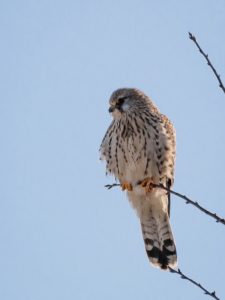Projets agriculture au Parc Naturel Burdinale-Mehaigne
With the aim of visiting concrete experiences of collaboration between farmers and parks in Wallonia, the EUROPARC Brussels office team visited the Parc Naturel Burdinale-Mehaigne on the 18 June 2020. Focused on rural development, the park develops several projects reconciling agriculture and biodiversity. This article is in French : you can use deepL to help you for translation in English or other language!
Afin de découvrir des expériences concrètes de collaboration entre les fermiers et les parcs, le 18 juin 2020, l’équipe du bureau de Bruxelles d’EUROPARC s’est rendu au Parc Naturel Burdinale-Mehaigne. Axé sur le développement rural, le parc développe des projets réconciliant agriculture et biodiversité.
En Wallonie, les 12 Parcs naturels correspondent environ à un tiers du territoire Wallon. Leur mission principale est le développement rural, en harmonie avec la nature. Crée en 1991, le Parc Naturel Burdinale-Mehaigne s’étend sur 11 000 ha sur 4 communes (Burdinne, Braives, Héron et Wanze). A l’origine, la création du parc a suscité certaines résistances, notamment auprès des agriculteurs mais aujourd’hui les choses ont évolué. Désormais, les managers du Parc et les agriculteurs travaillent main dans la main. Le Parc est considéré comme un partenaire. Créer une relation de confiance nécessite de la communication et beaucoup d’échanges. Rencontre avec la directrice Mélanie Cuvelier, Inès Van Den Broucke et Hadrien Gaullet pour nous parler de leurs projets sur l’agriculture.
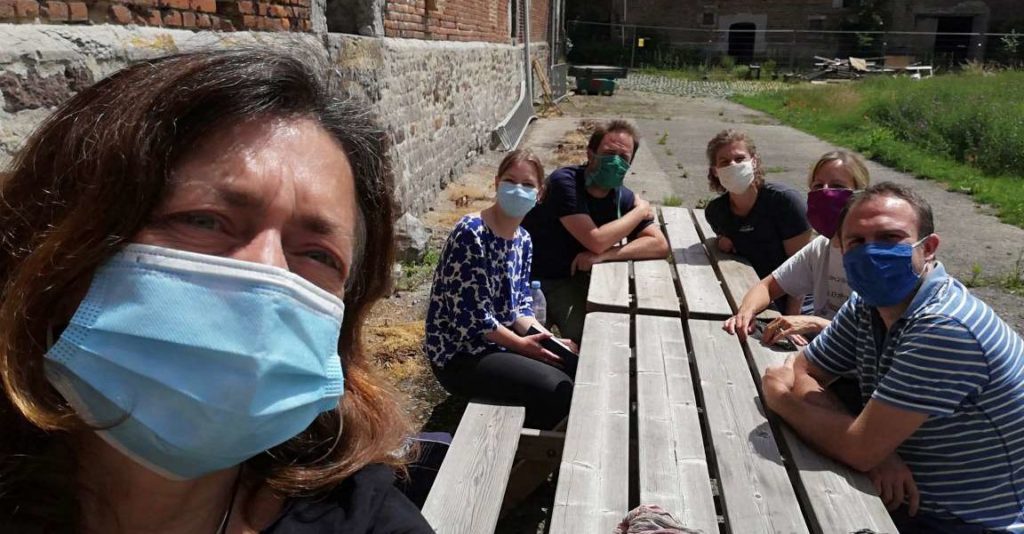
De droite a gauche : Hadrien Gaullet, Inès Van Den Broucke, Mélanie Cuvelier, Olivier de Sadeleer, Elisa Tuaillon, Stefania Petrosillo
Les caractéristiques du Parc Naturel Burdinale Mehaigne
Traversé par deux rivières, qui donnent leur nom au Parc, ce dernier est composé d’une réserve naturelle (Marais de Hosdent) et de 2 sites Natura 2000 : la Vallée de la Burdinale (BE 33008) et la Vallée de la Mehaigne (BE 33009). Pour plus d’information, visitez la page du site web du Parc !
L’agriculture est au centre du territoire couvre près de 80% du territoire du Parc naturel .Le Parc est caractérisé par des paysages d’openfield historiquement dédiés à la culture céréalière. Cette région est caractérisée par un sol limoneux fertile, et le prix de la terre est élevé. Le territoire a d’ailleurs été affecté par l’intensification agricole et le remembrement des terres.
.
.
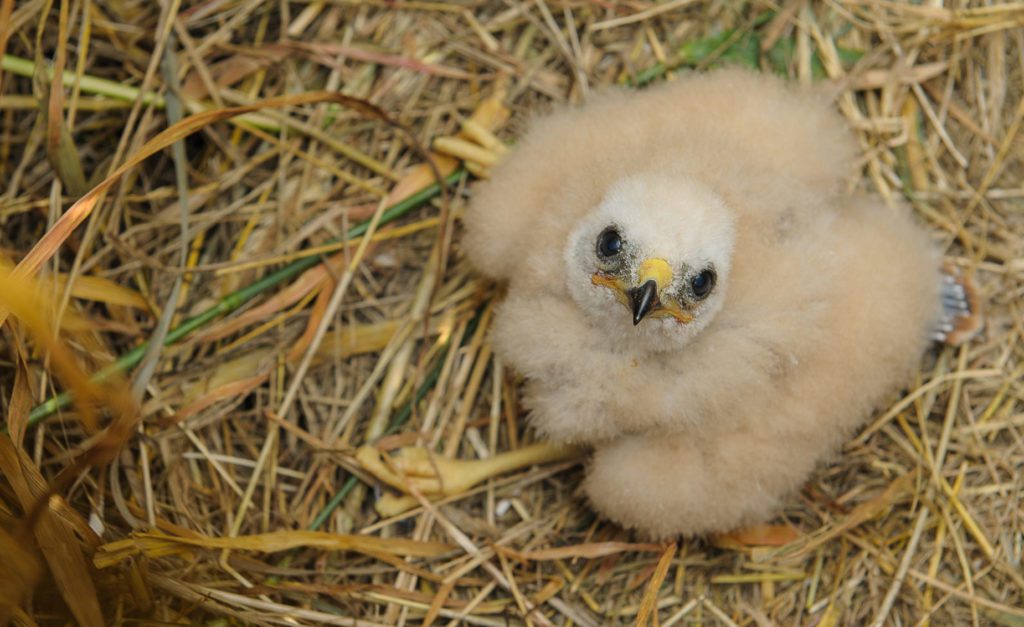
© Sébastien Leunen – Les trois espèces de Busards (Saint-Martin, des Roseaux et Cendré) sont protégées et fort en déclin, les deux premiers sont présents régulièrement au Parc naturel et le Busard cendré y a niché l’année dernière. Cette photo est un des poussins au Parc Naturel de Burdinale-Mehaigne.
Le Parc Naturel de Burdinale-Mehaigne contribue à créer une communauté sensible à la biodiversité dans l’agriculture. Cette mission se décline à travers deux projets : la diminution des produits phytosanitaires et la protection de la faune, notamment les oiseaux. Dans un contexte où les bénéfices par rapport à l’investissements sont faibles et ou les agriculteurs sont pointes du doigts, favoriser le dialogue est au cœur de ces deux projets.
.
.
L’agriculture est le miroir de la société. Si l’agriculture est intensive, c’est avant tout parce que notre société est intensive.
Le projet GAL
Le projet « Agriculture et biodiversité » a pour principal objectif de recréer une capacité d’accueil des plaines agricoles pour la faune et la flore.
« Avant la récolte, les oiseaux ont de la nourriture et des espaces pour se protéger. Mais du jour au lendemain, le sol est mis à nu. Cela met en danger la survie des oiseaux, tout aussi bien pour leur nourriture que leur habitat. »

Les tendances des espèces © Hadrien Gaullet
Outre les rencontres en terre agricole et échanges de bonnes pratiques, diverses actions sont mises en place : mesures agroenvironnementales et climatiques, installations de structures (agrainoirs, plots à alouette des champs) et des actions de sensibilisation auprès des habitants pour favoriser la cohésion sociale et valoriser l’image de l’agriculteur.
Pour favoriser la biodiversité en agriculture, recréer un maillage écologique (tallus, bassin d’orage, bord de route…) est un élément clé. Aujourd’hui il est à peu près de 1.7% dans cette zone (5% est nécessaire afin d’assurer un statut de conservation stable).
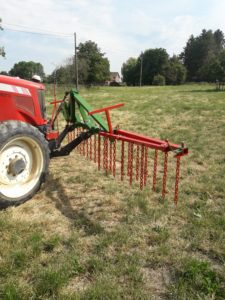
Barre d’effarouchement
A droite, c’est une photo d’une barre d’effarouchement construite en collaboration avec l’agriculteur Jacques Anciaux. Il s’agît d’un dispositif situé à l’avant du tracteur et qui effarouche la faune avant le passage de la machine. Cela permet d’éviter une mortalité importante lors des travaux de fauche et de destruction mécanique des engrais verts. L’agriculteur se place au service de la biodiversité en construisant cet outil en vue de le prêter à tous les agriculteurs qui en font la demande !
PDF de la presentation Projet GAL – Wallonie
.
Le Projet Générations Terre
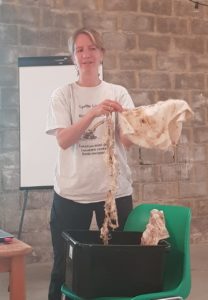
EN TERRE TON SLIP, un test pour comparer la biodiversite des sols. A gauche, un sol riche vs a droite un sol pauvre.
Décliné dans 3 parcs, l’objectif du projet pilote Générations Terre est de réduire de 30 à 50% les produits phytosanitaires (herbicides, insecticides et fongicides) dans les 5ans.
Le projet a 3 axes d’action : suivi personnalisé (constat, calcul, observations), une animation territoriale (formations, essais, échanges de bonnes pratiques), communication (vulgarisation, valorisation de l’image de l’agriculteur). Favoriser le dialogue entre les citoyens et les agriculteurs est essentiel pour valoriser l’image des producteurs. La charte du vivre ensemble est un outil développé pour favoriser le dialogue entre agriculteurs et riverains.
PDF de la présentation : Projet Generations Terre
En plus de ces projets agriculture, le Parc Naturel Burdinale-Mehaigne a développé des projets Nature-biodiversité comme les Apis jardin (charte écologique de gestion du jardin pour les citoyens), des vergers et plantations de haies pour faire découvrir la diversité de la flore aux citoyens.
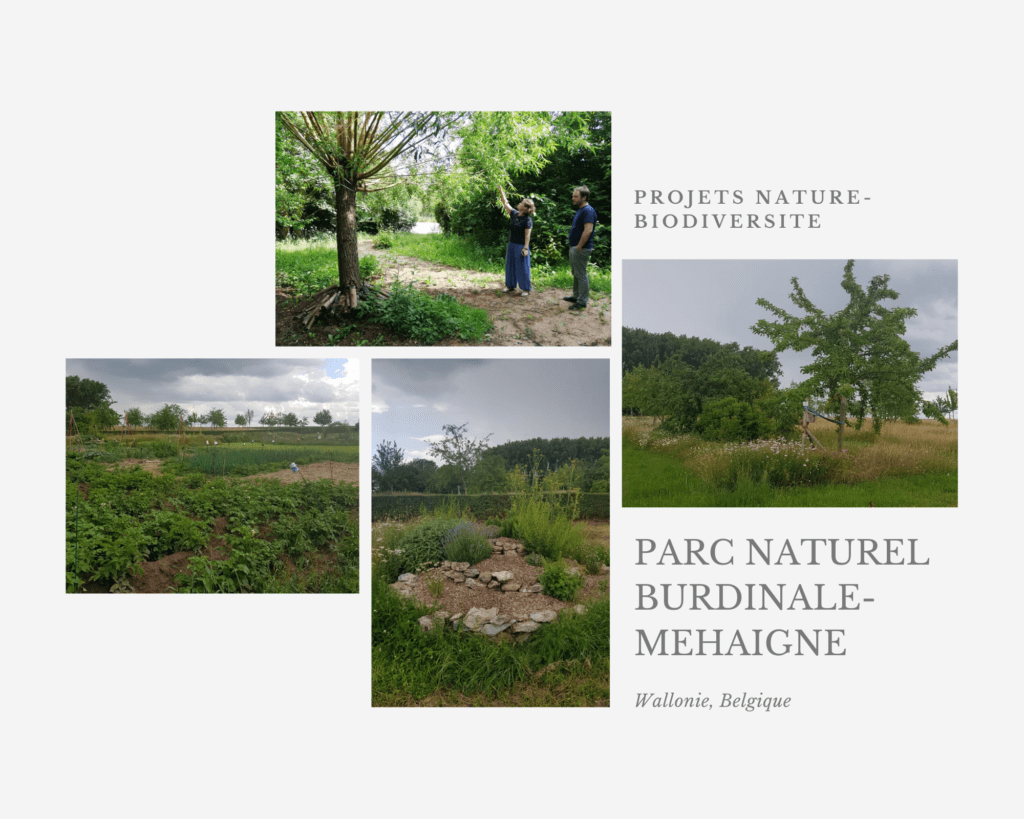
Projets Nature – Biodiversite
Un grand merci à Mélanie, Ines et Hadrien pour leur accueil !
[WEBINAR] Healthy Parks, Healthy People Europe
EUROPARC Webinar: Healthy Parks, Healthy People Europe – connecting people and nature for a healthier and happier nature
Following the publication of the EU’s biodiversity strategy, the EUROPARC Federation is launching a new initiative to help realise the contribution of green health to Europe’s green recovery. The webinar will hear from those working in both Parks and Health sectors on this initiative, and how it contributes to the new approach to linking health and nature now needed in the COVID-19 era.
Healthy Parks Healthy People Europe is a programme developed by the EUROPARC Federation and built on the innovative practise gathered by the Health and Protected Areas commission over several years.
- Monday 29th of June
- 11:00 CEST
The webinar is free, but registration is needed. For all info and registration: https://healthyparkshealthypeople.gr8.com/
Seminar Dialogue 2020
On June second the Seminar Dialogue 2020 was held online, about biodiversity, climate and Protected Areas toward 2030.
Following the successful experiences in 2017, 2018, and 2019 , the EUROPARC Federation and the Nature Unit of the DG Environment organised the “Seminar-Dialogue 2020 – Partnerships for Biodiversity” on the 2nd of June 2020, titled ‘Biodiversity, climate and Protected Areas towards 2030’.
By bringing together representatives of the European Commission and Protected Areas professionals on an annual basis, the EUROPARC Federation aims to highlight the contribution of Protected Areas in implementing key European policies, raise awareness of managers about EU policy developments and provide the European Commission with clear insights about the challenges faced by professionals in the field.
This year, 40 participants met for an interesting debate about the role of Protected Areas and Natura 2000 in the new EU Biodiversity Strategy 2030 and EU climate policies, in the framework of the EU Green Deal.
Due to the restrictions presented by the COVID-19 pandemic, the meeting took place online.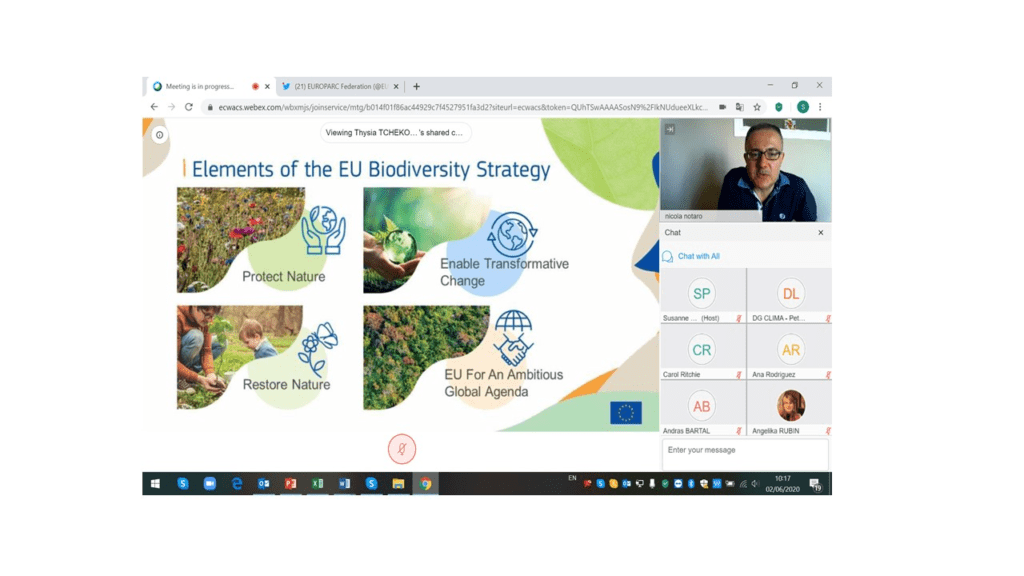
The European Commission presented several targets set in the biodiversity strategy:
- Legally protected a minimum of 30% of EU land and sea
- Strictly protect at least 10% of the EU Protected Areas
- Effectively manage all Protected Areas
- Develop a specific EU Nature restoration plan
- Bring nature back to agricultural land.
- Increase the quantity and quality of forests
- Restore and protect marine ecosystems
- Greening urban and periurban areas
- Ensure the full implementation and enforcement of EU environmental legislation
EUROPARC welcomes the commitment shown by the Commission and advocates:
- That the important role of Protected Areas needs to be recognized at national and regional level. Protected Areas are key players, contributing to achieving the wide biodiversity targets. Protected Areas are essential governing bodies for nature conservation and for integrated landscape management. They are laboratories of innovation and active promoters of sustainable development practices. Those are crucial to complement the Natura2000 network. Therefore, we welcome the vision for a transnational, coherent and integrated EU network of Protected Areas.
- That the new terminology used (strict protection, effective areas based conservation) has to be clarified.
- That adequate financial support must be provided to increase or extend the number of Protected Areas
- That Innovative governance models for Protected Areas should be explored
All this info and much more can be found in our report:
It was a successful and productive exchange. We would like to thank again the DG ENV Nature Unite and DG CLIMA for this opportunity.
EUROPARC’s Meeting with DG Environment Commissioner Sinkevičius
EUROPARC met DG Environment Commissioner Virginijus Sinkevičius for an online meeting discussing a wide range of topics.
President Ignace Schops and Executive Director Carol Ritchie met DG Environment Commissioner Sinkevicius on the 18th of June – online.
In a fruitful and productive meeting we discussed the role of protected areas in the implementation of the Biodiversity Strategy 2020, some of the impacts of COVID-19 on parks and the possibility of opening small grants to look at post-COVID impacts, the need for new and innovative capacity building to equip Natura 2000 managers to deliver more effective outcomes and the Healthy Parks, Healthy People Europe programme, that is about to be launched.
Commissioner Sinkevicius accepted the invitation to speak at the EUROPARC Conference 2020 ONLINE (subject to his availability) and reiterated DG Environment’s view of the EUROPARC Federation as a valued and important stakeholder and the expertise in our network. We spoke too of the value of Regional and Nature parks, where sustainable development meets nature conservation and the contribution and recognition they need to fully contribute to reaching the 30% role of protected areas in Europe as a pillar of the Biodiversity Strategy 2030.
EUROPARC expressed our willingness to represent the needs of our members, in DG environment processes and structures, as well as bring the models and practice from parks to better action for the Biodiversity Strategy and implement European policy.
